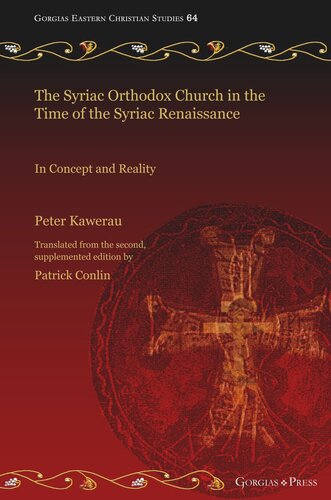

Most ebook files are in PDF format, so you can easily read them using various software such as Foxit Reader or directly on the Google Chrome browser.
Some ebook files are released by publishers in other formats such as .awz, .mobi, .epub, .fb2, etc. You may need to install specific software to read these formats on mobile/PC, such as Calibre.
Please read the tutorial at this link: https://ebookbell.com/faq
We offer FREE conversion to the popular formats you request; however, this may take some time. Therefore, right after payment, please email us, and we will try to provide the service as quickly as possible.
For some exceptional file formats or broken links (if any), please refrain from opening any disputes. Instead, email us first, and we will try to assist within a maximum of 6 hours.
EbookBell Team

4.0
16 reviewsThe Syriac Orthodox Church experienced a revival of writing and theological insight during the 11th – 13th centuries known as the Syriac Renaissance. Authors like Bar ʿEbroyo, Michael I Rabo (Michael the Great) and Dionysios Bar Salibi authored their own original works and translated Greek and Arabic writings into Syriac. However, then as now, grand ecclesiastical plans sometimes fell short of real life application. This time period was also a significant one in secular history, with Crusaders, Muslims, and Mongol khans battling for control of the Middle East. After scouring the available Syriac chronicles from the Syriac Renaissance, Peter Kawerau has summarized both the stated ideals and lived realities of ecclesiastic structures and interactions between Syriac-speaking Christians and their neighbors of other traditions and faiths. Most of the information here comes from Bar ʿEbroyo's and Michael I Rabo's chronicles, although other sources are referenced as well. Peter Kawerau (1915–1988) was a German scholar of church history, focusing on the eastern churches. He studied theology at the Universities of Wroclaw and Berlin. In 1949, after World War II, he earned his doctorate at the University of Göttingen, with this book being a version of his dissertation. He did his Habilitationsschrift in 1956 at Münster. He would go on to teach at the University of Marburg where he founded the Ostkirchen Institut. His corpus includes works on Protestant, Syriac, African, and Byzantine church history. This work was part of his Habilitationsschrift and originally published in 1955 with an updated edition in 1960. This translation, based on the 1960 edition, updates some of the language used and makes this work available to English speaking students, scholars, and interested laity.